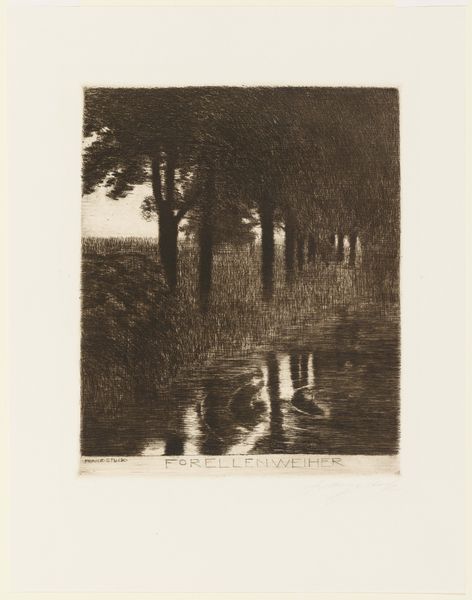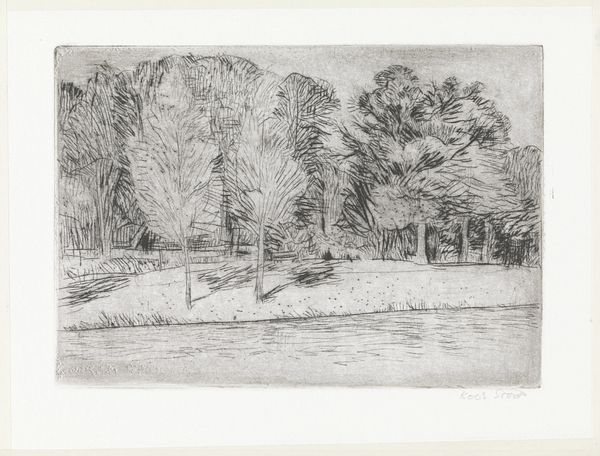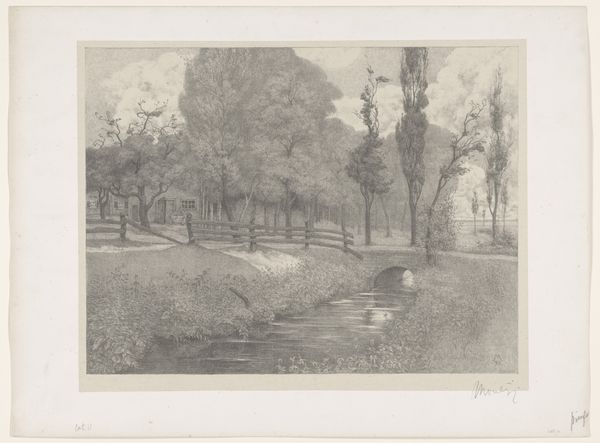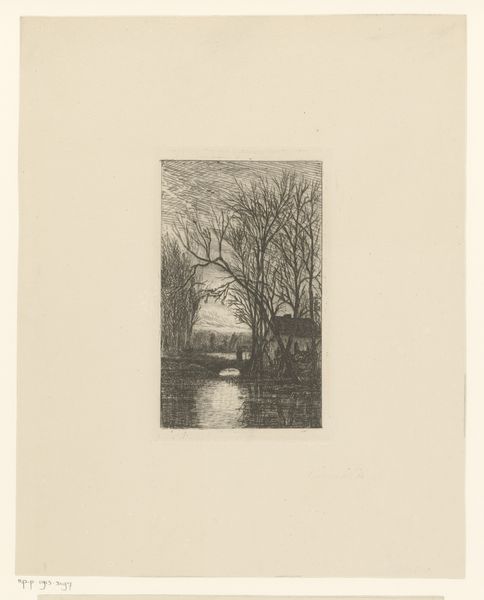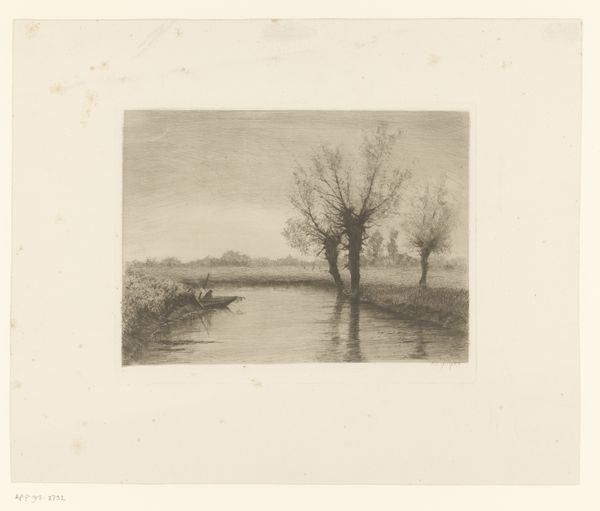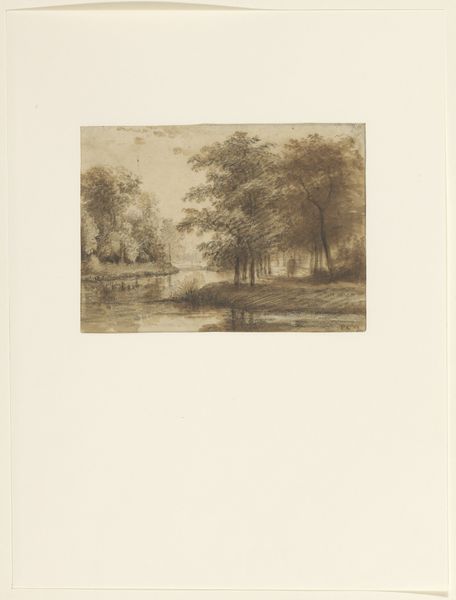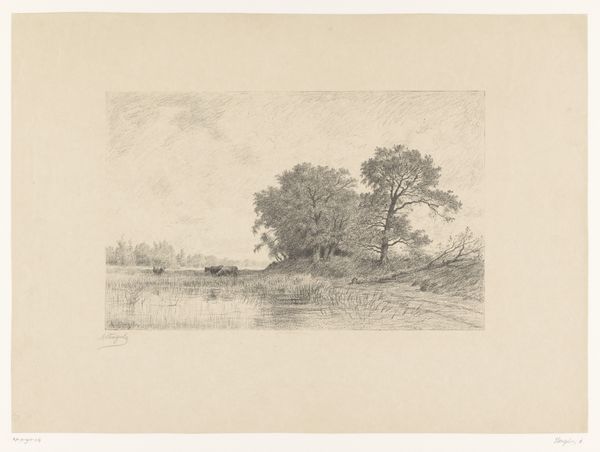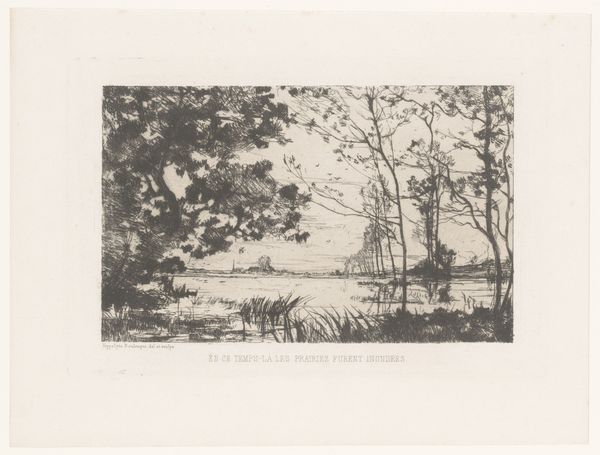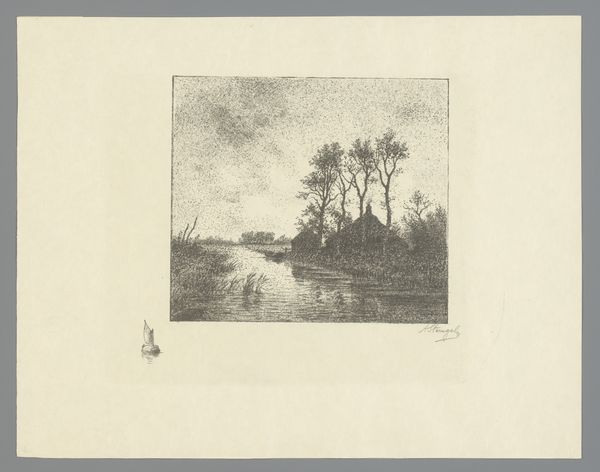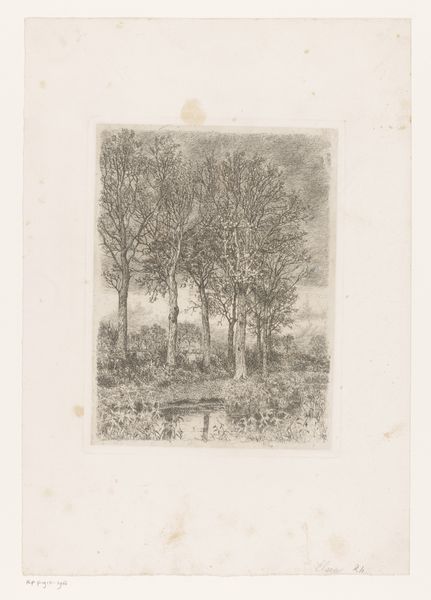
Dimensions: height 293 mm, width 424 mm, height 200 mm, width 248 mm
Copyright: Rijks Museum: Open Domain
Editor: Here we have Simon Moulijn's "Willows and Poplars Along a River," a pencil drawing from 1898 currently held in the Rijksmuseum. It feels very serene, almost like a memory fading at the edges. What do you see in this piece? Curator: I see a quiet visual echo of a rapidly changing world. Notice how Moulijn renders these trees – particularly the willows – as almost sentinel figures. Throughout history, the willow has often symbolized mourning, resilience, and the cyclical nature of life. Its presence here, alongside the river, speaks to enduring themes of reflection and transition, in a landscape undergoing significant transformation with industrialization. Editor: So, it's more than just a pretty landscape; it's carrying all this symbolic weight? Curator: Absolutely. Consider also the deliberate choice of pencil, a humble yet versatile medium, capturing nuances and subtle gradations of light. Moulijn isn't just depicting a scene; he's invoking a feeling, a memory of place. The river itself, a powerful symbol across cultures, connects past and future, stillness and flow, what reflections might it hold, if you could reach out and touch them? Editor: That makes me see the composition differently. It’s less about a specific place and more about universal feelings of time and memory. Curator: Precisely. By understanding the symbols employed and the artist's technique, we can appreciate how this seemingly simple landscape carries profound emotional and cultural resonance. And that awareness enhances our viewing experience. Editor: I didn’t realize a drawing could contain so much. I'll definitely look at landscapes differently now, searching for those underlying symbols.
Comments
No comments
Be the first to comment and join the conversation on the ultimate creative platform.

